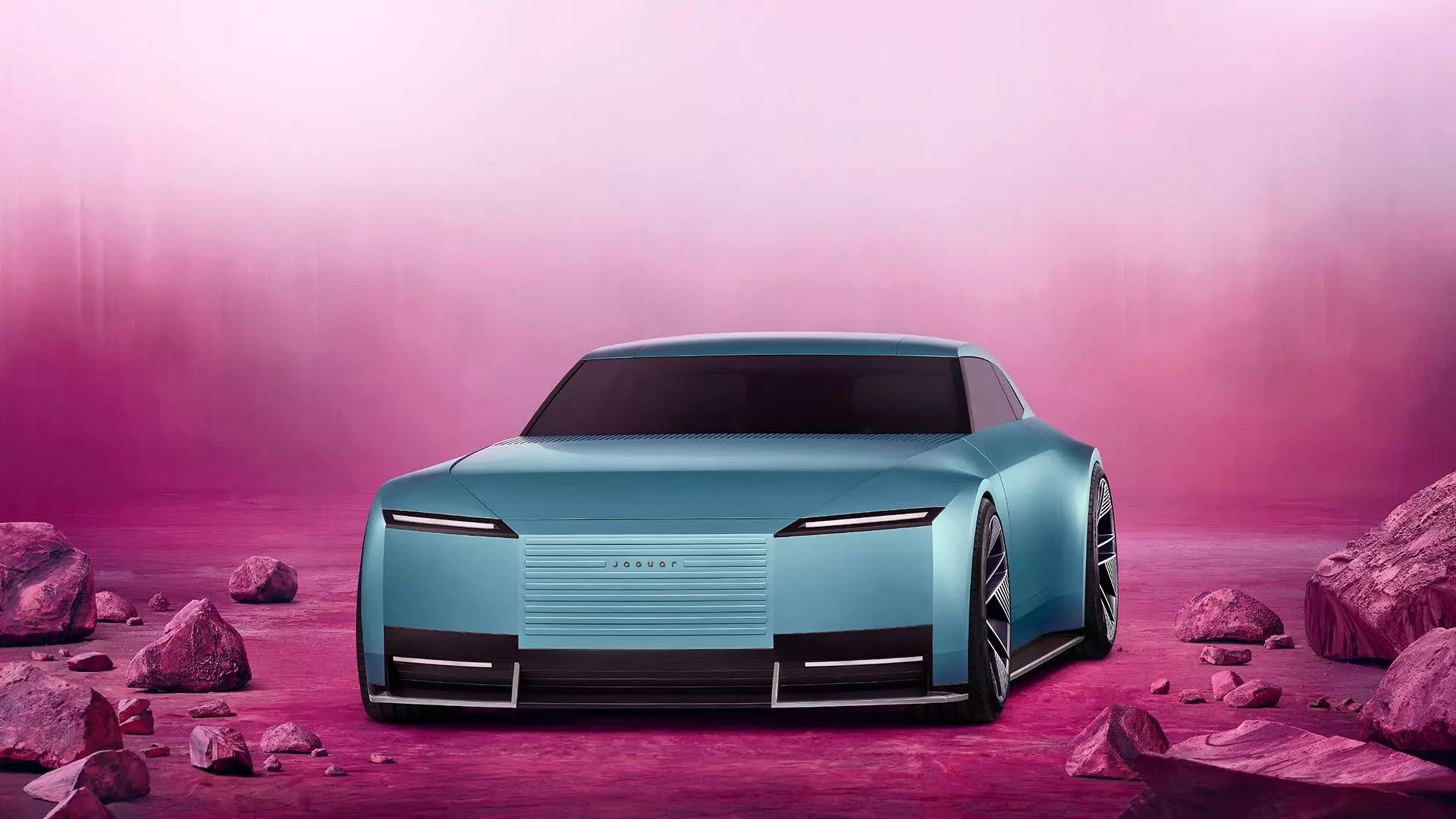Jaguar, the iconic British luxury car manufacturer known for its sporty sedans and SUVs, has unveiled an innovative electric vehicle concept known as the Type 00. This vehicle marks a significant pivot in the brand’s design philosophy and serves as a critical component of its transition to an all-electric lineup. On the surface, the Type 00 showcases a minimalistic yet visually distinct style that breaks away from Jaguar’s traditional aesthetics.
The aesthetics of the Type 00 reflect a fusion of simplicity and boldness. With its boxy silhouette, large wheels, and striking light design, it presents an image that is markedly different from the sleek, sporty vehicles still in circulation under the Jaguar name. This shift challenges customer expectations and signals that the design language of the future will not mimic the past. Concept cars, while not intended for consumer markets, often act as a litmus test for public reception. Jaguar’s decision to introduce the Type 00 seems to stem from both a desire to capture new customers and to portray an image of modernity in an evolving automotive landscape.
Moving forward, Jaguar plans to roll out a number of electric models, including what is anticipated to be a four-door gran turismo that bears resemblance to the Type 00. This strategic shift indicates that Jaguar is no longer content with being just another luxury car player; rather, it aims to redefine its identity in a competitive market where sustainability and technological advancements are key.
Accompanying the unveiling of the Type 00 is a controversial new marketing initiative under the tagline “Copy Nothing.” Just a few weeks before the concept’s reveal, Jaguar launched an extravagant advertising campaign showcasing a myriad of androgynous models in colorful settings, further emphasizing diversity and inclusivity. However, this campaign has attracted a share of criticism, particularly regarding the decision to abandon the well-known Jaguar logo, a staple of the brand’s identity since the 1950s.
Critics on social media have been vocal about their opinions, with many perceiving this rebranding as a move away from the brand’s heritage. Terms like “woke” have been used to describe the new direction, and the absence of vehicles in the promotional video has left some questioning the focus and authenticity of Jaguar’s intentions. Despite such backlash, the company has opted to defend its rebranding efforts, labeling them as a necessary “bold and imaginative reinvention.” This indicates a willingness on Jaguar’s part to engage in what could be a fundamentally transformative approach, setting aside traditional norms for the sake of innovation.
The auto industry is currently in a state of flux as more manufacturers pivot toward electric vehicles. Jaguar’s decision to halt new car sales in the UK sets the stage for its planned electric-only transformation by 2026. It may appear drastic, but this move is reflective of a broader paradigm shift across the industry, as competitors like Ford and General Motors are also exploring similar commitments to electrification.
However, the path to this sustainable future is fraught with challenges. The anticipated rapid adoption of electric vehicles has been slower than hoped, forcing companies to reassess their market strategies. The rebranding initiative and the new Type 00 concept represent an opportunity for Jaguar to realign its brand image, potentially allowing it to capture a different segment of the automotive market. Jaguar’s managing director, Rawdon Glover, has articulated that the goal is to occupy a “completely different price point” while moving away from established automotive stereotypes.
Jaguar’s unveiling of the Type 00 concept car is emblematic of a broader transition that seeks to redefine the brand’s identity and offerings amid rapidly changing consumer preferences and industry standards. While the reception may be mixed, the strategic decisions to innovate, rebrand, and shift towards an electric future underscore Jaguar’s commitment to remain relevant in an increasingly competitive landscape. As the brand navigates this transformation, its ability to balance tradition with modernity will ultimately dictate its success in this new era of automotive excellence.


Leave a Reply